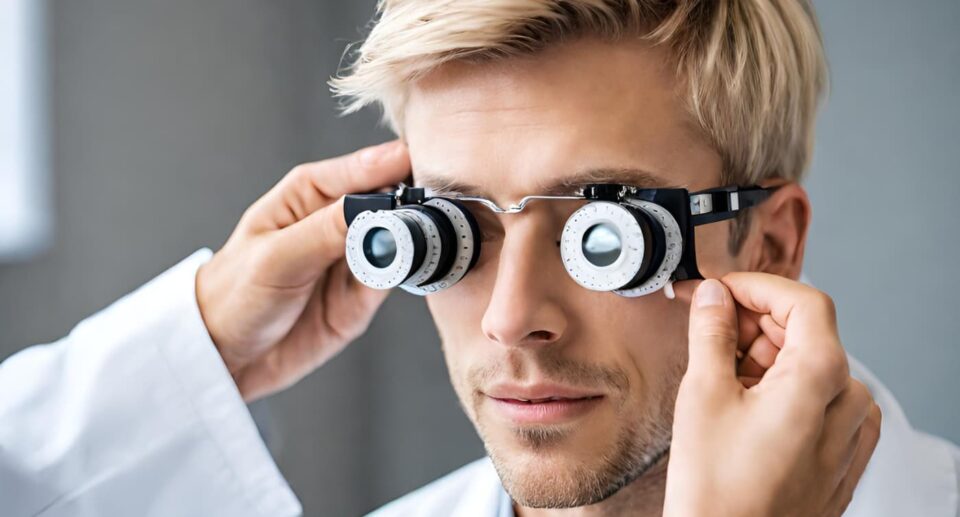Is SMILE Surgery the Future of Vision Correction?

Vision correction procedures have come a long way in recent years, and one of the most promising developments on the horizon is SMILE eye correction. SMILE, which stands for Small Incision Lenticule Extraction, is gaining attention for its minimally invasive approach and impressive outcomes. In this article, we will explore what SMILE surgery entails, how it compares to LASIK, and whether it might indeed represent the future of vision correction.
Understanding SMILE Surgery
SMILE surgery is a revolutionary vision correction procedure that utilizes cutting-edge laser technology. During the surgery, a precise laser is used to create a small, lens-shaped piece of tissue within the cornea. This tissue, called a lenticule, is then removed through a tiny incision, reshaping the cornea and correcting vision issues.
The Evolution of Vision Correction
Vision correction has seen remarkable progress over the years. From the early days of glasses and contact lenses to the advent of laser eye surgery, the field has continually evolved. Today, patients have access to a range of advanced procedures designed to improve their vision and reduce their reliance on corrective eyewear.
SMILE vs. LASIK
One of the key discussions in the world of vision correction revolves around the comparison between SMILE and LASIK, another popular laser eye surgery. Both procedures aim to correct common vision problems such as myopia (nearsightedness) and astigmatism, but they differ in several ways. SMILE is known for its minimal invasiveness, as it requires a smaller incision and typically involves less discomfort during recovery.
The Role of RxSight LAL
In addition to SMILE surgery, another groundbreaking technology making waves in the vision correction field is RxSight Light-Adjustable Lens (LAL). This innovative intraocular lens can be precisely adjusted after cataract surgery, providing patients with customizable vision correction. The combination of SMILE surgery and RxSight LAL points to a future where vision correction procedures are more tailored to individual needs.
SMILE’s Growing Popularity
SMILE surgery has been rapidly growing in popularity. Patients are drawn to the procedure’s minimally invasive nature and quick recovery times. The increasing adoption of SMILE by both patients and eye care professionals underscores its potential as a prominent player in the field of vision correction.
Advancements in Vision Correction
Beyond SMILE surgery, the vision correction field is continually advancing. Researchers and practitioners are exploring new technologies and techniques to enhance patient outcomes further. These developments include improvements in laser technology, diagnostic tools, and surgical methods, all of which contribute to the ongoing evolution of vision correction procedures.
The Potential of SMILE Surgery
As we look ahead, SMILE surgery has the potential to play a significant role in the future of vision correction. Its minimally invasive approach, quick recovery, and growing popularity among patients suggest that it may become an even more prominent choice for those seeking to improve their vision. Additionally, the integration of technologies like RxSight LAL enhances the customization and precision of vision correction procedures, further strengthening the case for SMILE’s future prominence.
Considerations Before Opting for SMILE Surgery
While SMILE surgery offers many advantages, it’s essential to consider some key factors before deciding if it’s the right vision correction procedure for you.
- Eligibility: Not everyone is a suitable candidate for SMILE surgery. Your eye surgeon will assess your eye health, prescription, and other factors to determine if you qualify for the procedure. Factors like corneal thickness, pupil size, and the stability of your prescription are crucial considerations.
- Realistic Expectations: SMILE surgery can provide excellent results, but it’s essential to have realistic expectations. While many patients achieve 20/20 vision or better after the procedure, some may still require glasses or contact lenses for specific activities like reading or night driving.
- Cost: Like any medical procedure, SMILE surgery comes with a cost. It’s essential to inquire about the total cost of the surgery, including pre-operative and post-operative care, as well as any potential enhancements or touch-up procedures.
- Recovery Period: While SMILE surgery boasts a relatively quick recovery, it’s vital to understand what to expect. You may experience mild discomfort, dry eyes, and temporary fluctuations in your vision during the initial recovery phase. It’s crucial to follow your surgeon’s post-operative instructions carefully to ensure a smooth healing process.
- Long-Term Benefits: SMILE surgery can provide long-lasting vision correction. However, it’s essential to consider the potential for age-related vision changes in the future. Presbyopia, for example, affects most people over the age of 40 and may necessitate reading glasses even after SMILE surgery.
- Alternative Procedures: While SMILE surgery offers numerous benefits, it’s not the only vision correction procedure available. Discuss your options with a qualified eye surgeon to determine which procedure aligns best with your unique needs and preferences.
- Choosing the Right Surgeon: The success of any vision correction procedure depends significantly on the skill and experience of the surgeon performing it. Research potential surgeons thoroughly, read reviews, and consider seeking referrals from trusted sources to ensure you select a highly qualified professional.
- Post-Operative Care: SMILE surgery requires careful post-operative care to monitor your progress and address any concerns promptly. Ensure you have a clear understanding of what is expected of you in terms of follow-up appointments and ongoing eye care.
Conclusion
In conclusion, SMILE surgery represents an exciting development in the world of vision correction. Its minimally invasive approach and impressive outcomes make it a compelling choice for individuals looking to free themselves from the constraints of glasses or contact lenses. With advancements like RxSight LAL and ongoing research in the field, SMILE surgery may indeed be the future of vision correction, offering a tailored and precise solution for those seeking improved vision and a better quality of life.




